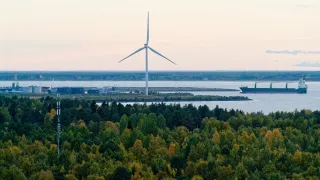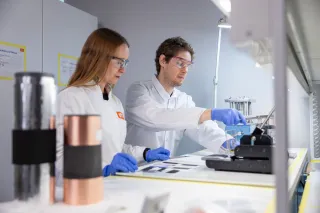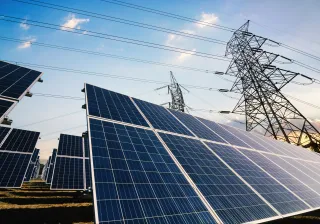Oulu consumers are increasingly aware of energy prices and their own energy consumption. VTT’s recent survey shows that energy consumption patterns are moving in a good direction and that as many as 86% of Oulu residents pay more attention to their energy consumption. Environmental issues also have a greater significance for Oulu residents than before.
As part of the Making City project, VTT surveyed Oulu residents’ energy awareness and energy consumption behaviour. This report is a follow-up for a survey carried out in 2021. The comparison of results provides information on changes in energy awareness and consumption patterns over the past two years.
According to the survey, Oulu has a good level of awareness of energy prices and consumption. Of the respondents, 83% were aware of energy prices, and 82% of the energy costs of their own household. There has been an improvement from the situation two years ago: in 2021, approximately 28% of the respondents did not know the amount of their own consumption, and now the corresponding figure was 19%.
“Significant changes in the energy market and the corresponding changes in pricing have clearly increased consumer interest in energy issues. Of the respondents, 55% reported a significant increase in their energy costs, and 86% had paid more attention to their own energy consumption. The survey was conducted at a time when the price of electricity was at its peak and it was difficult to anticipate price development. Of the respondents, 43% said that they were concerned about how they can get by financially,” says Anne Immonen, Senior Scientist at VTT.
Energy consumption patterns had changed significantly over the past two years. For example, 76% of the respondents now try to keep room temperature reasonable, whereas the corresponding figure in the previous survey was 51%. Of the respondents, 71% restrict their use of warm water instead of 58%. In general, energy is used sensibly in Oulu homes.
Money savings and environmental issues encourage reducing consumption
The respondents were fairly willing to reduce their energy consumption. The most central motive was saving money, but energy conservation and emission reductions were also considered important. Of the respondents, 36% paid slightly more for environmentally friendly energy, whereas in the previous survey 27% said they were ready to do that.
A large number of respondents were now prepared to change their activities in order to save energy and the environment: for example, 63% would be prepared to rationalise their daily energy consumption at home. Of the respondents, 57% would be prepared to use a service to conserve energy, whereas only 14% were ready to do the same two years ago. For example, energy companies provide consumers with smart services that target consumption to the hours when electricity is at its cheapest. Based on the survey, demand for these services seems to be increasing.
“There has been a major change in attitudes and an increasing need for an open dialogue on energy issues. For example, the dialogue on the price and availability of electricity has become considerably livelier, most apparently due to the increase in prices. The desire for advice on how to change your own energy consumption has also increased,” says Samuli Rinne, Project Manager of the City of Oulu.
The respondents themselves estimated that their energy awareness and consumption patterns have changed in recent years. Approximately four out of five respondents (81%) felt that their energy awareness had improved, and about two thirds (66%) said that they had reduced their energy consumption. Of the respondents, 67% felt that they understood the impacts of their choices on the environment better than before, and 63% now cared more about the environment than 3 years ago.
The report is part of the Making City research project, which includes VTT, the City of Oulu, the University of Oulu, Arina, Sivakka, YIT, Oulun Energia and Jetitek as participants from Oulu. The consumer survey was conducted online in January–February 2023, and a total of 596 people responded to it. The results were compared to a similar survey carried out in the project in 2021, to which 378 people responded.





